Rostherne
OS grid ref:- SJ743835
The village of Rostherne lies three miles from Knutsford and to the north of Tatton Park. It is an immaculately kept village where quaint cottages line the road leading up to the red sandstone village church.
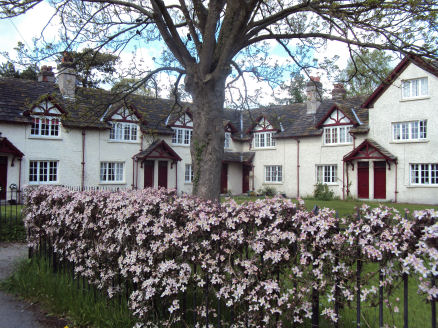
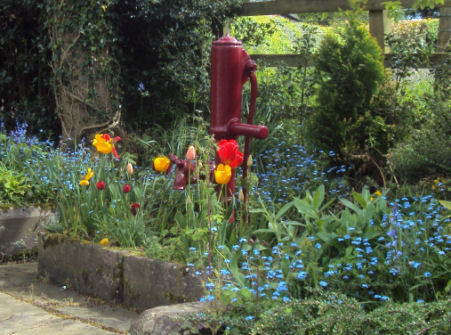
Rostherne is mentioned in the Domesday Book when it was held by Gilbert Venables, Baron of Kinderton. In the fields immediately opposite the Tatton Park gate which faces Rostherne stood the Tudor village once known as 'Camp Green', this was entirely demolished by the Egerton family, owners of tatton Park, as it spoilt the view at the end of their drive. The entire village was relocated to new buildings at Rostherne.
There are two theories as to the origin of the name Rostherne, it has been said to derive from the old Norse personal name Ravos and thorne, the 'thornbush of Ravos'. Other sources state that it originates with the Saxon word rood meaning 'cross' and therne meaning 'lake'.
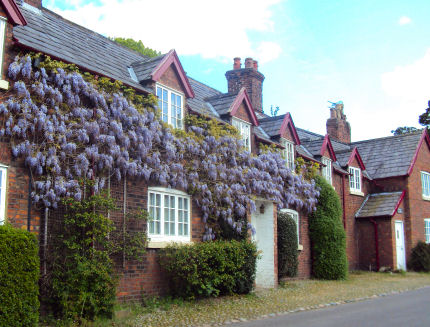
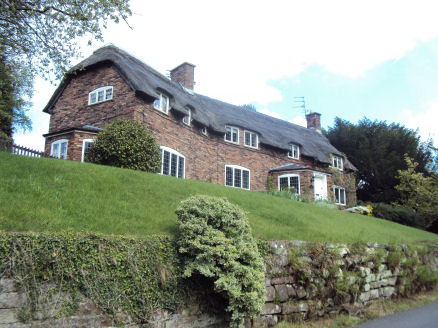
A small group of houses, built for workers at Tatton Park, form the village square known as 'Lady Mary Square'. They were constructed in 1909 by Lady Margaret Egerton, and display the Egerton crest. The Egertons were the owners of the nearby Tatton Hall Estate until it was bequeathed to the National Trust in 1958.
St. Mary's Church
St. Mary's Church dates from the twelfth century. The steeply sloping churchyard is dominated by a gothic style memorial which commemorates Joseph Simpson, a succesful Manchester merchant who moved to Rostherne in the last century.
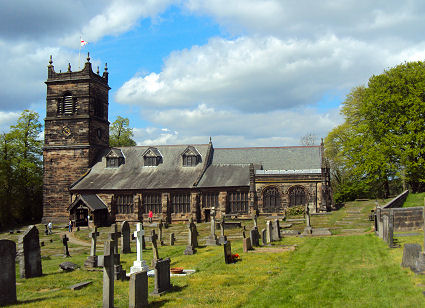
The lych gate at the western side of the churchyard, dating from 1640, is one of the oldest and best examples in Cheshire. It has an ingenious closing mechanism, operated by a heavy wooden weight and a pulley system.
The church of St. Mary was restored by the Earl of Egerton in 1888, on the 700th anniversary of its foundation. In the chancel is the recumbent effigy of a knight dating from around the reign of Henry III which was discovered when the tower fell in 1741. The church also contains memorials to the Egerton, Venables, Cholmondeley, Leigh and Brooke families.
Head of the Celtic water god, Cernunnos, from the church wall
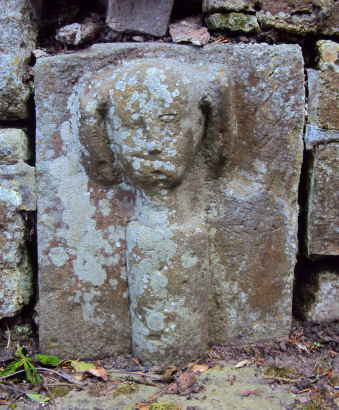
The church probably stands on a site of pre-Christian worship. The 1, 800 year old carved head of the Celtic horned water god, Cernunnos, was found in the eighteenth century, it is now incorporated in a wall behind the church overlooking the mere. The head is carved from a block of sandstone. Cernunnos, the horned god, after which the Cornovii tribe took their name from Cernunnos. . It was reputedly pulled out of Rostherne Mere and may have come from a shrine.
In the churchyard is a sundial dating from around 1730.
Rostherne Mere, (pictured below) a National Nature Reserve, and the deepest (30 metres) and largest mere in Cheshire lies next to the village, the mere is home to a variety of wildfowl. As well as open water, the reserve area includes associated reedbed, woodlands and grazing land. The mere was the only known location in Britain for a form of freshwater smelt, an esturine fish of the salmon family.
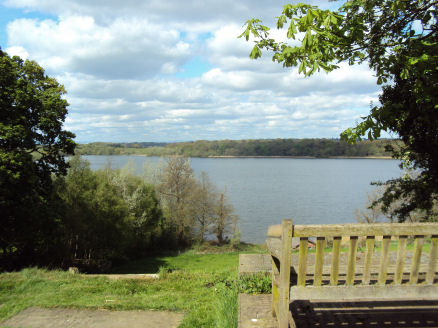
Woodland on the reserve supports all three native woodpecker species together with sparrowhawk and kestrel. Scrub areas are home to reed bunting, willow warblers and whitethroat. The reserve also supports a number of butterfly species, most notably white-letter hairstreak, purple hair streak and common blue.
Nearby places of interest
Tatton Park lies to the south of the village, one of the premier stately homes in Cheshire, spans 2000 acres, and includes the Mansion and the Tudor Old Hall along with 1000 acres of deer park and 50 acres of superb gardens.
Tabley Hall, situated at Nether Tabley around 2 miles from Knutsford, is an elegant, brick built, Grade I listed building in the Palladian style, the only one of its type in the North West.
